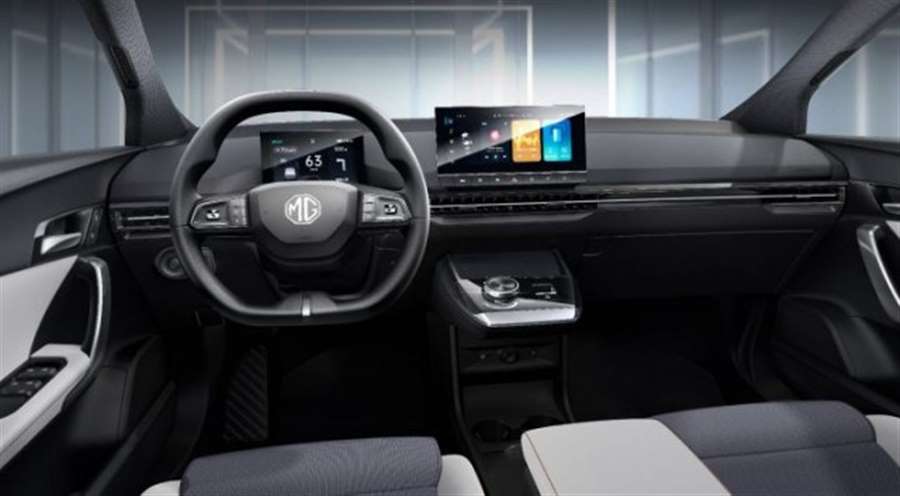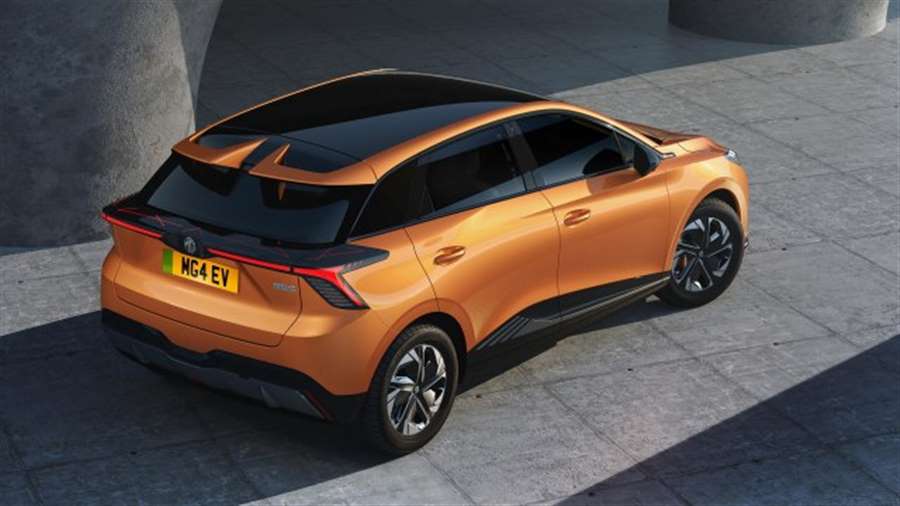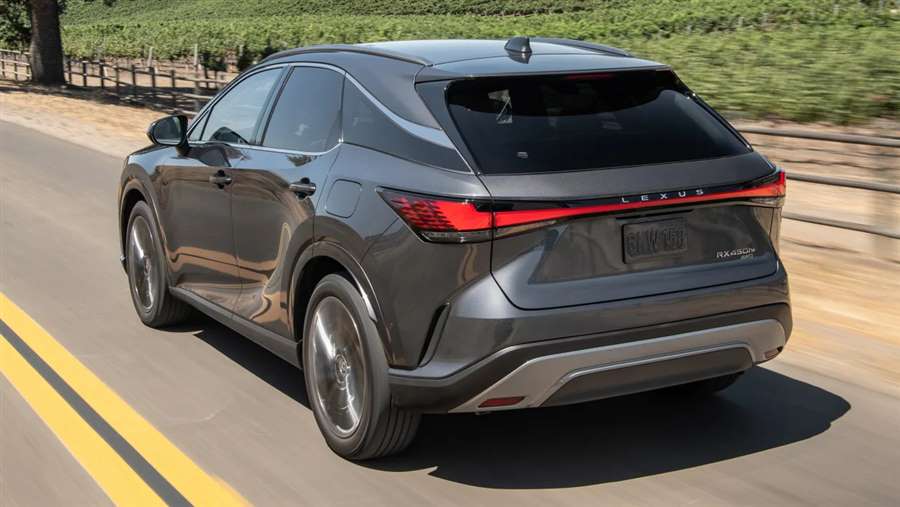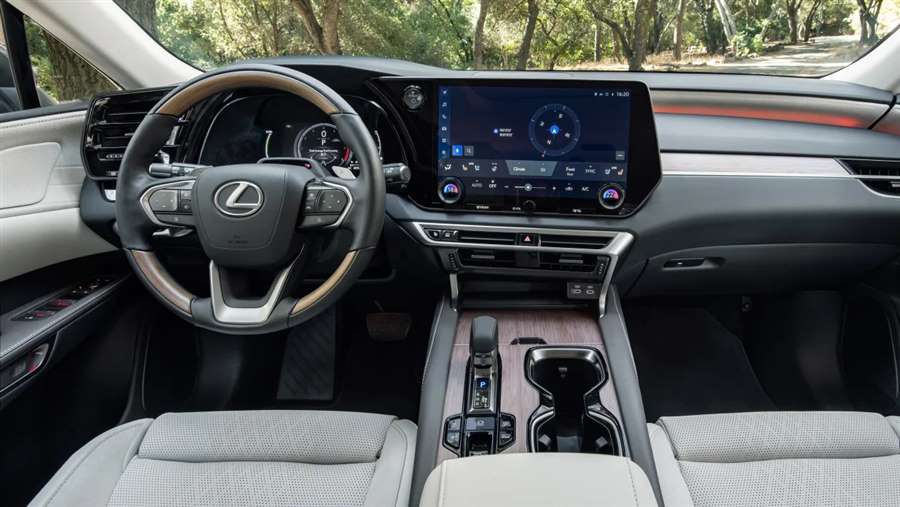
Worldcarblog.com
The Chinese electric car seriously threatens the European competition
Along with the seven-year warranty, there is also an attractive starting price of 29,490 euros, which is significantly less than European rivals.
It is not necessary to write specifically about the previously defunct English brand MG, which was revived in China (owned by SAIC). Basically, this manufacturer is now back on the European continent, and has a new range of models.
One of those coming is the electric compact model MG4 Electric, which was recently introduced, and now it is known for its more than competitive price. It is the first model on the new MSP-EV modular mechanical platform that will enable the development of cars from small city models to large sedans.

The trunk of the MG4 Electric is 363 liters. The car has two digital screens, one of seven inches behind the steering wheel and the other central, of 10.25 inches.
Between the long wheelbase and the battery (the thinnest on the market, according to MG, at just 11 centimeters thick), there's reportedly plenty of cabin space.
The MG4 Electric will be available in two variants. The first one has a battery with a capacity of 51 kWh, which enables it to have a driving autonomy of 350 kilometers.
The second, with 64 kWh, offers a range of up to 450 kilometers.
In both cases, the engine power is 150 kW (204 hp), with 250 Nm of torque. Thanks to this, the car reaches 0 to 100 km/h in less than eight seconds, even with a not so small weight of 1,655 kilograms.
With a 135 kW AC fast charge, it takes about 35 minutes to go from zero to 80% capacity.

As for the brakes, they are of the "by wire" type, that is, without a physical connection between the pedal and the brake.
Starting with the basic Standard package (there are two more: Comfort and Luxury), it comes standard with features such as 360-degree cameras, voice commands, semi-autonomous driving assistant, and ultrasonic cameras and radars for active safety systems.
With a seven-year warranty, the starting price of 29,490 euros is extremely attractive, which is less than European competitors. Namely, basic models of electric compact cars start at 38 thousand euros.
VW and Audi claim that it is impossible to fake mileage on their cars
By returning the mileage, fraudsters can increase the value of a used car by several thousand euros per vehicle, but Volkswagen and Audi say that they have been using technology for several years that almost completely prevents this.
Adjusting the mileage is routine today and is offered from as little as 50 euros. The police assume that every third used car sold in Germany has a fixed mileage.
Fraudsters increase the value by an average of 3,000 euros per car, deceiving car buyers or leasing companies. The estimated total damage in Germany is around 6 billion euros per year.
EU Regulation 2017/1151 formally stipulates that the mileage in a car must be kept, and the law applies to new vehicle models from September 2017, and from 2018 to all new cars. However, until today, there is a lack of detailed regulation on what this protection should look like and which neutral body should check it.
The result of all this is that cheating continues, but not on all cars.
When browsing the relevant used vehicle websites, ADAC experts noticed that this no longer applies to the Audi A3 (from 2020) and VW Golf 8 (from late 2019).
These models appear to be better protected against mileage fraud than many competitors. The reason is the new computer chips with HSM (Hardware Secure Module) which are used to protect the mileage. Volkswagen announces further measures to prevent odometer reading, according to HAK magazine.
Volkswagen is discontinuing another model
At Volkswagen, they have decided to cross paths with sedans, at least when it comes to versions that run on fossil fuels.
After deciding to withdraw the sedan Passat from the range, the giant from Wolfsburg has reportedly decided that the larger Arteon will also follow the eternal hunting ground. The good news for all fans is that it won't happen overnight, but a worthy replacement is on the way.
Namely, as Automotive News has learned, the Arteon will not be reissued, and the current generation will retire in 2024. It will be replaced by the electric ID model. Aero, which announced the concept earlier this year.
As is known, ID. The Aero uses the MEB platform, and the announced concept offered a range of 620 km combined with 77 kWh batteries. After that, a production model should appear, which will most likely see the light of day on the Chinese market for the first time.
Let's also say that the smaller Jet model should be withdrawn from the American market due to reduced interest. When it comes to the Golf, all options are still open.
Electric Audi R8
The successor to the Audi R8 is due to appear in the middle of this decade, although Audi insiders say that the supercar has not yet received the official green light.
However, the novelty will not be called R8, and it will be characterized by a completely new design direction so that it will not resemble its predecessor. However, it will stay true to the pure sports car concept, with two doors and more power than anything else in the Audi range. The current R8 will remain in production, most likely until the end of 2023, according to the British Autocar.
Head of Audi Sport Sebastian Grams points out: "What we are trying to do is to get as close as possible to that ultimate racing feeling. He added that 60% of its parts are similar to GT3 spec cars. The R8 is produced alongside the Audi E-tron GT and RS E-tron GT models at Audi Sport's Böllinger Höfe plant in Germany, so the facility is already set up to produce top-of-the-range electric models.
Grams said: “We will absolutely retain the craftsmanship because that is what makes the car unique from the rest of the portfolio. If we bring a successor to the R8, we'll try to keep doing that. It is important for the customer. There is love in the R8."
Audi has a number of platform options for the R8 successor, although it will most likely use one developed with Porsche. The SSP Sport platform, recently confirmed by Porsche, will be used on SUVs and sedans and will replace the J1 platform currently used on the Porsche Taycan and Audi E-tron GT.
However, there is another possible basis for the next-generation R8: the platform that Porsche is preparing for its future electric models, the Porsche 718 Boxster and Cayman.
On the topic of platforms, Grams said: “We have brands around the Volkswagen Group that can achieve synergy.
Audi Sport has already demonstrated its electric sports prowess with the RS E-tron GT, which accelerates from 0-100 km/h in 3.3 seconds and delivers 637 hp, with a range of 237 miles (381 km) and fast charging capability. The future R8 will need to exceed these figures, as well as have enough power and range to drive on the track.
"We have to be bold, as we were with the first generation R8." It was a brave decision to build that car. We have to be innovative and transform into an electric world and digitization.”
The arrival of the R8 successor will be carefully timed to spearhead Audi's plans to launch only electric models in its base line from 2026, although the strategy for the Audi Sport models is slightly different.
Speaking about the upcoming model, Grams said: “I am fighting for [the successor to the R8], and so is the Audi management. We're looking at different kinds of concepts, and the direction is electrified. If I get my wish, it will be an electric R8. And if you're doing a super sports car, then it's a two-door concept.”
The new Audi TT is another popular Audi Sport model under consideration. "We're working on it," Grams says. "It's an icon. But at the moment, my focus is the successor to the R8.”
New Lexus RX 450h+ 2022 review
The new Lexus RX aims to bring the brand’s latest technology to bear on the full-size premium SUV market
Verdict
The new Lexus RX takes known tech from the smaller NX and extrapolates this into a bigger package. There's much to like here. The new infotainment and the efficiency potential from the 450h+ powertrain are huge steps forward, while the Lexus rides and handles fairly well. However, it doesn't fulfil its brief quite as well as its smaller sibling. In this large premium SUV class the Lexus is facing some very luxurious competition, such as the BMW X5 xDrive45e, and we'd like a little more refinement as a result. Pricing will also be key to the success of the package.
For years Lexus has tried and not necessarily always succeeded in taking on established premium players – mostly from Germany – but more recently it's hit a rich vein of form.

Thanks to an all-new platform and, in something of a first from Lexus, a plug-in hybrid powertrain, the brand's latest NX mid-size premium SUV boasts a brilliant all-round blend of qualities in this most competitive of classes. And now Lexus is aiming to scale up that formula for its all-new RX.
Whereas the NX rivals cars such as the BMW X3 and Mercedes GLC, the RX is a BMW X5 and Mercedes GLE competitor. But like its smaller sibling, this fifth-generation RX is also based on the brand new GA-K platform and features Lexus's 450h+ powertrain, making it the first-ever plug-in hybrid RX. In fact, Lexus claims “it's a complete reinvention of the large luxury SUV”.
That's quite a statement - as is the new car's styling, which is the first thing you might notice. Along with the NX and forthcoming RZ all-electric SUV, this RX will define the Japanese brand's next chapter in terms of design.
We've seen the firm's 'spindle grille' front-end before, but the RX evolves that into what Lexus is calling 'spindle body'. The grille is bigger with the overall shape now integrated into the whole front end of the car's body.
There are slim headlights, sharp creases down the sides and a rakish 'floating' roof thanks to blacked-out C-pillars, plus a full-width light bar across the raked tailgate. It's clearly an evolution in design terms, but still recognisably a Lexus.

The same is true inside. The brand is making a much bigger feature of its Japanese heritage these days, and we're all for it. The cabin takes a 'less is more' approach, with the 14-inch central touchscreen dominating the layout.
Lexus's latest infotainment system is a massive improvement on the old track pad-based setup in the previous RX, too. It works snappily, offers plenty of features and now integrates Apple CarPlay and Android Auto, both wirelessly.
Our top-spec Takumi model also featured adaptive suspension, heated and vented leather seats, three-zone air-conditioning, a panoramic roof, 21-inch alloy wheels, a head-up display, LED headlights and wireless phone charging as standard.
In typical Lexus fashion, the cabin feels beautifully built and material quality is good, but there's not much in the way of flair to the design, which could be an issue at this level of the market. On that point, prices will be announced later this year, but expect the base RX 350h self-charging hybrid to start from around £60,000 when it goes on sale later in 2023.
It's the new 450h+ plug-in hybrid we're focusing on here, however. It uses a 2.5-litre four-cylinder petrol engine working in conjunction with an 18.1kWh battery that feeds an electric motor driving the front wheels and another unit located on the car's rear axle to deliver e-four-wheel drive. The total output stands at 304bhp with the 0-62mph sprint dispatched in 6.5 seconds.
Performance is absolutely fine. It doesn't ever feel rapid, but in electric mode there's enough grunt. Lexus claims a zero-emissions range of more than 40 miles, which seemed accurate and achievable to us on the launch.
When the 18.1kWh battery is depleted (the 6.6kW on-board charger means a full charge takes around two hours and 45 minutes), the RX uses its second battery and becomes a self-charging hybrid, like the 350h powertrain; it's a technological first as far as we're aware and means that even when you've used the bigger battery's energy, there's still strong efficiency potential. Official economy claims stand at up to 256.8mpg with CO2 emissions and a Benefit-in-Kind taxation banding as low as 24g/km and eight per cent respectively.

Once energy is depleted, or the petrol engine kicks in, refinement takes a hit as even with the improvements Lexus has made when it comes to the operation of its e-CVT automatic gearbox, the petrol motor still drones – especially if you ask for hard acceleration.
The trick is to drive to the powertrain's strengths and lean on the electricity. Then the engine isn't as noticeable and the RX delivers a relaxed drive.
Like with the NX, there's more linearity to the way the powertrain responds and the petrol engine revs up. This gives a better connection between car and driver, and while it's still not perfect, in a big SUV like this it prioritises comfort and easy-going dynamics over sportiness.
The new platform means the RX still acquits itself relatively well, however. Our test route in the US didn't provide much in the way of challenging corners or surfaces, but the RX rides relatively nicely, with the damping control and comfort only breaking down over the worst transverse bumps and ridges in the road, where the extra battery mass becomes apparent. Otherwise, the suspension works smoothly to filter out imperfections and control the body.
The steering is light, but this helps manoeuvrability, as does the rear-axle steering, which offers up to four degrees of lock on the back wheels. However, the RX doesn't feel like a big car. It doesn't feel like a particularly dynamic one either, but there's enough agility here by the same stroke.
In short, it delivers a decent balance between comfort and engagement, with the focus placed on the former, meaning the RX is a solid SUV from a driving perspective, given how it will be used most of the time.
The 461-litre boot is some way off the biggest cars in this class, however – and this is despite the lithium-ion battery being mounted under the car's floor to help packaging. While there's enough space for most duties, a family holiday could test the RX's load-lugging capability more than a BMW X5 xDrive45e, for example.
However, space in the rear is better with enough head and legroom (even if rivals still feel roomier), while electrically adjustable heated seats in the back are standard on top-spec Takumi models, which is a nice touch.
Source: autoexpress.com
Electric vehicles are losing popularity
Experts warn: Due to high energy costs, electric cars are losing their attractiveness, because if the crisis continues, the question is whether there will be interest from investors to build charging stations.
High energy costs threaten the future of electric cars, industry bosses in Germany have warned, writes The Guardian.
The rise in electricity prices, as well as the price and availability of raw materials, along with the chronic shortage of parts and the ubiquitous reduction in the income of citizens, have a significant impact on the production and sale of cars. If this trend continues, there are also concerns that there will be a knock-on effect on investors who will have no reason to build charging facilities, making electric cars less attractive.
Until this crisis, electric cars were increasingly attractive - especially as fuel costs rose - but since the recent increase in electricity prices, say in Germany by about a third compared to last year, the difference in costs has narrowed.
"If electric cars become more expensive and unattractive to use, electric mobility is in danger of collapse because hardly anyone will buy an electric car," automotive economist Stefan Bratzel told German media.
According to HAK magazine, he and other advocates of electric vehicles are now calling on the German government to ensure that the price of electricity stays below the price of gasoline, which they say is key to the future of electric cars.
Renault presents the successor to the legendary "four" at the Paris show
Brands operating within the Renault company will exhibit as many as six novelties at the Paris Motor Show, which begins on October 17.
Among the announced premieres will be the Alpine concept, which heralds "a new phase in the transformation of the brand", according to the announcement. The production version of this car will arrive in 2025.
The revived legendary Renault 4 will also debut in Paris. The company announced that this time it is an electric model.
Apart from the use of electric drive, there are no details available about the new "four". As a reminder, the original was one of the best-selling models of its time, with over eight million units produced between 1961 and the early 1990s.
A new version of the modern Renault 5 concept will also be in Paris. The original concept of this vehicle (pictured) is from January 2021, but there is speculation that the new variant could be different.
Dacia has not yet commented on its plans for the Paris Motor Show. The company says that it will present the "final phase in the transformation of its visual identity" at the salon, which includes the new, recently unveiled logo.
There is no information yet on whether a new vehicle of the Romanian brand will be shown at the fair.

















